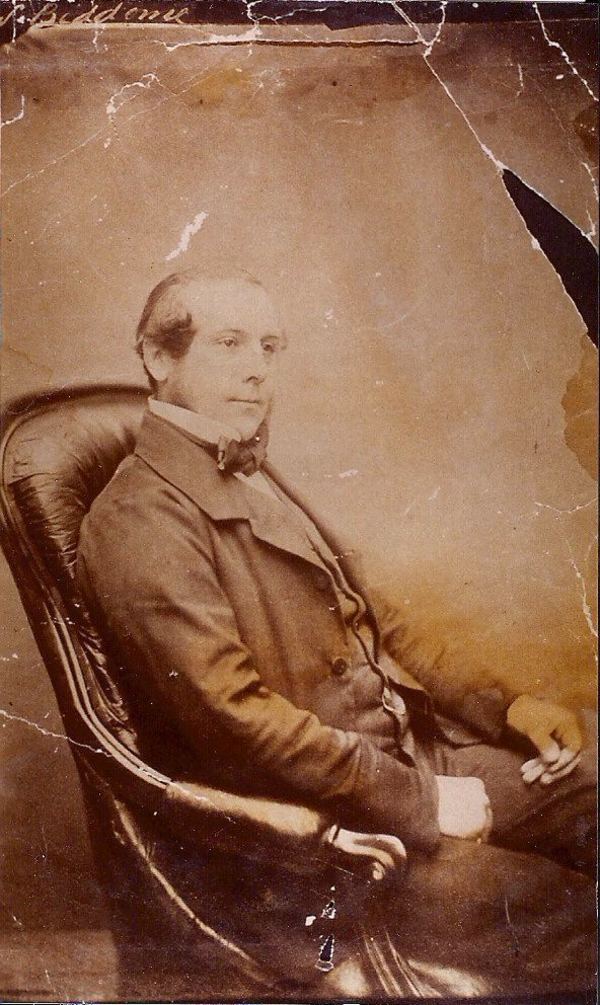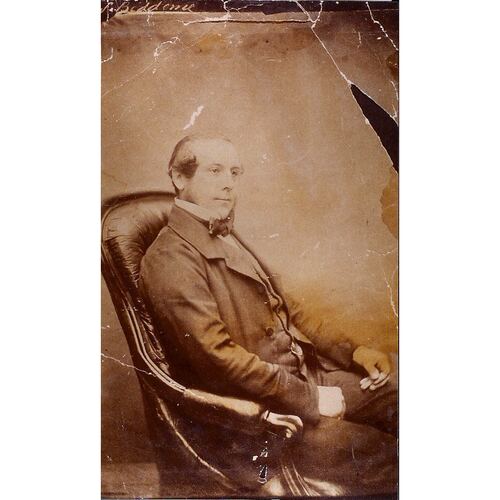
Source: Link
BEDDOME, HENRY SEPTIMUS, physician and HBC employee; b. c. June 1830 in the parish of St Peter upon Cornhill, London, England, son of William Beddome; m. 11 July 1859 Frances Omand of the Red River Settlement (Man.), and they had eight children; d. 24 March 1881 at Headingley, Man.
In October 1848 Henry Septimus Beddome began the study of medicine at Guy’s Hospital in London, shortly after significant educational reforms had been introduced. Clinical lectures, bedside teaching, case reporting, and the employment of senior students in the medical and surgical wards in positions of gradually increasing responsibility: all these were now characteristic features of Guy’s. In June 1851, before completing the third and final year of his medical course, Beddome embarked as a surgeon on the Hudson’s Bay Company’s Prince of Wales for its annual voyage to York Factory (Man.). He returned to his studies in the fall of 1851 and on 3 May of the following year signed an agreement to return to York Factory as “Surgeon and Clerk” for five years at £100 per annum with return transportation guaranteed. Medical certificates dated 26 May show he qualified as a member of the Royal College of Surgeons of England; one week later he embarked on the Prince of Wales.
Upon landing on 11 September, Beddome found that he had under his immediate care 50 or more persons who wintered in the cluster of storehouses, workshops, and living quarters that was York Factory. Their life and work were wearing and hazardous. Although none of Beddome’s medical journals survive, it is likely that he had to cope with the same sort of afflictions, disorders, and emergencies as his predecessor, including blurred vision and headaches, rheumatism, dysentery, sledding and other accidents, childbirth, scurvy, and influenza.
Beddome’s responsibilities ranged far beyond the confines of the post. He was sent to Fort Churchill (Churchill, Man.) in 1854 to treat Postmaster William Anderson’s ailments. He was also the public health and quarantine officer for the entire Northern Department of the HBC and for ships sailing to England. Epidemics could rage through a summer population swollen by interior boatmen, visiting natives, and ships’ passengers.
In 1857, when Beddome’s term of service ended, Bishop David Anderson of Rupert’s Land apparently convinced him that he might earn £200 a year as a surgeon in the Red River Settlement. Beddome travelled to Upper Fort Garry (Winnipeg) with a detachment of Royal Canadian Rifles, sent out at the request of the HBC to buttress its authority among the residents of Red River as well as to counter Sioux movements to the south and American troops stationed at Pembina (N. Dak.). Sixteen York boats from Red River carried Beddome, 100 soldiers, 12 women, and a number of children over 700 miles and 34 portages south to the Red River Settlement. Beddome remained at Red River for two years and in June 1859 he signed another agreement with the HBC to serve as surgeon and clerk at York Factory for five years, first at £120 per year and then at £150. He took his bride to the north with him.
When typhus broke out among the 70-odd HBC recruits who arrived on the Prince of Wales in 1863, Beddome permitted only about a third of them to travel inland. From September until early December there were always 20 to 30 sick men: the outbreak was no doubt Beddome’s greatest trial in his decade of doctoring on the bay.
In September 1864 Beddome and his family returned to Red River where he established a practice and a permanent residence, according to family tradition on the Red River just south of St Andrew’s Church. Beddome rode on horseback to his calls or treated patients in his surgery. It is said that when Louis Riel went into hiding in 1870, Beddome concealed him for a while in his dispensary.
Beddome and fellow doctors, John Harrison O’Donnell, Curtis James Bird*, John Christian Schultz*, and J. B. Campbell, were the founders of the Medical Health Board of Manitoba, incorporated in 1871. It became the College of Physicians and Surgeons of Manitoba in 1877.
When smallpox broke out in November 1876 among the recently arrived Icelandic settlers at Gimli, Man., and spread among local Indians, a board of health was organized under the chairmanship of Lieutenant-Colonel William Osborne Smith. Beddome, perhaps because of his York Factory experience, was chosen to make a tour of inspection of the east side of Lake Winnipeg during the winter. At Sandy River he buried the corpses of the HBC officer and two Indians, and he vaccinated the people at Fort Alexander on the Winnipeg River. In February 1877 Beddome took over the supervision of the Gimli district and stayed until spring, when the Icelanders began to abandon their winter dwellings and move into new ones built on their homesteads back from the lake. Beddome died at Headingley, on 24 March 1881, and was buried in the cemetery of St Andrew’s Church.
PAM, HBCA, A.32/21; B.239/a/103–8, 180; MG 7, B4; MG 12, B1, Corr., nos.1384, 1458, 1466, 1517; B2, Corr., nos.202, 211, 221, 255, 335. H. C. Cameron, Mr Guy’s hospital, 1726–1948 (London and Toronto, 1954). R. [B.] Mitchell, Medicine in Manitoba, the story of its beginnings (Winnipeg, [1955]). A. M. Johnson, “Life on the Hayes,” Beaver, outfit 288 (winter 1957): 38–43. G. F. G. Stanley, “A soldier at Fort Garry,” Beaver, outfit 288 (autumn 1957): 10–15.
Cite This Article
Thomas F. Bredin, “BEDDOME, HENRY SEPTIMUS,” in Dictionary of Canadian Biography, vol. 11, University of Toronto/Université Laval, 2003–, accessed March 31, 2025, https://www.biographi.ca/en/bio/beddome_henry_septimus_11E.html.
The citation above shows the format for footnotes and endnotes according to the Chicago manual of style (16th edition). Information to be used in other citation formats:
| Permalink: | https://www.biographi.ca/en/bio/beddome_henry_septimus_11E.html |
| Author of Article: | Thomas F. Bredin |
| Title of Article: | BEDDOME, HENRY SEPTIMUS |
| Publication Name: | Dictionary of Canadian Biography, vol. 11 |
| Publisher: | University of Toronto/Université Laval |
| Year of revision: | 1982 |
| Access Date: | March 31, 2025 |



